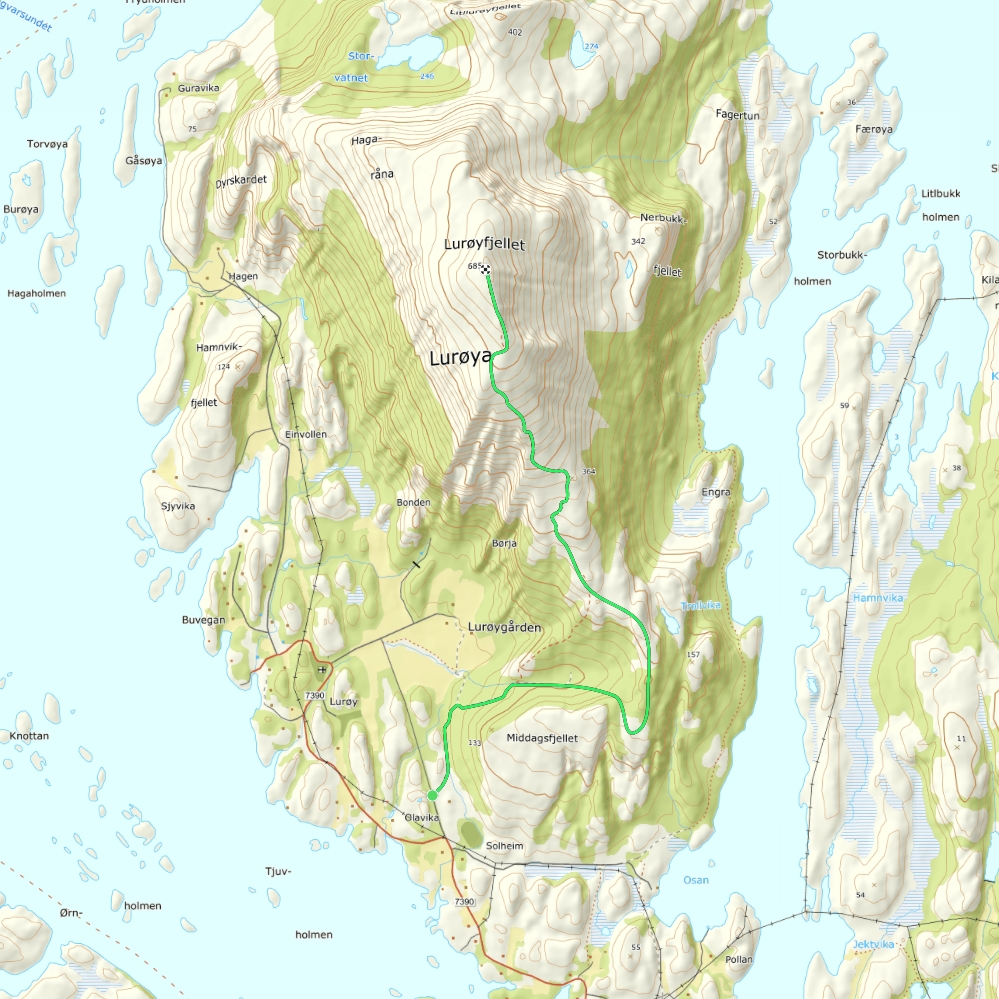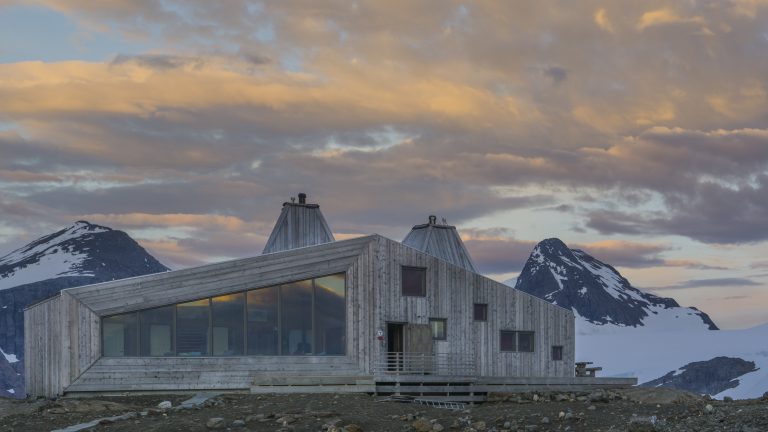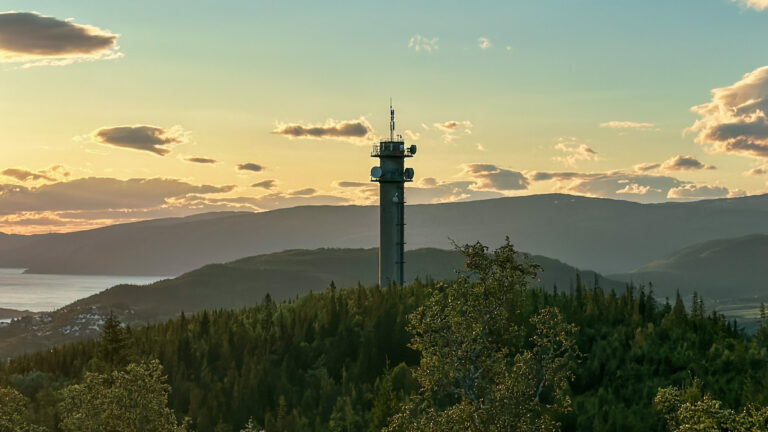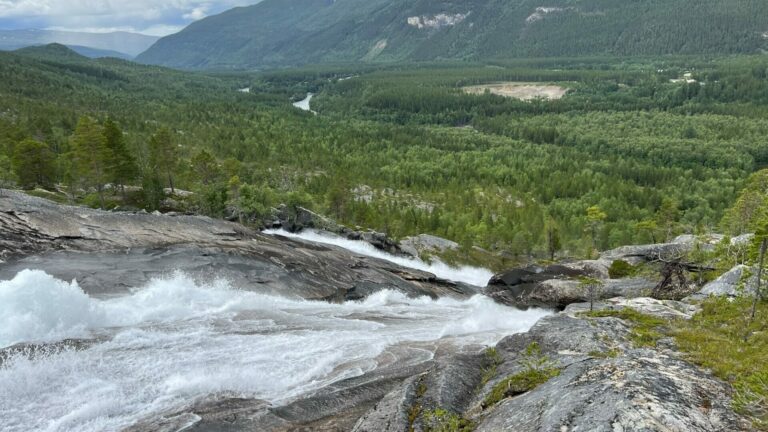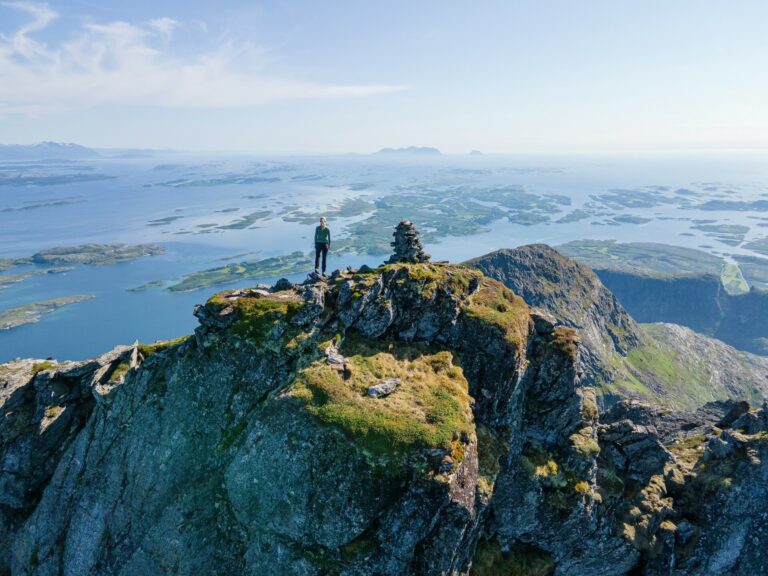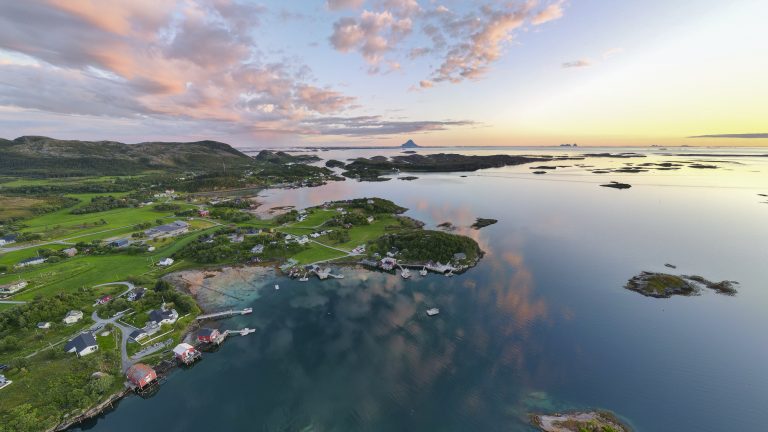A hiking adventure: Lurøyfjellet 689 masl.
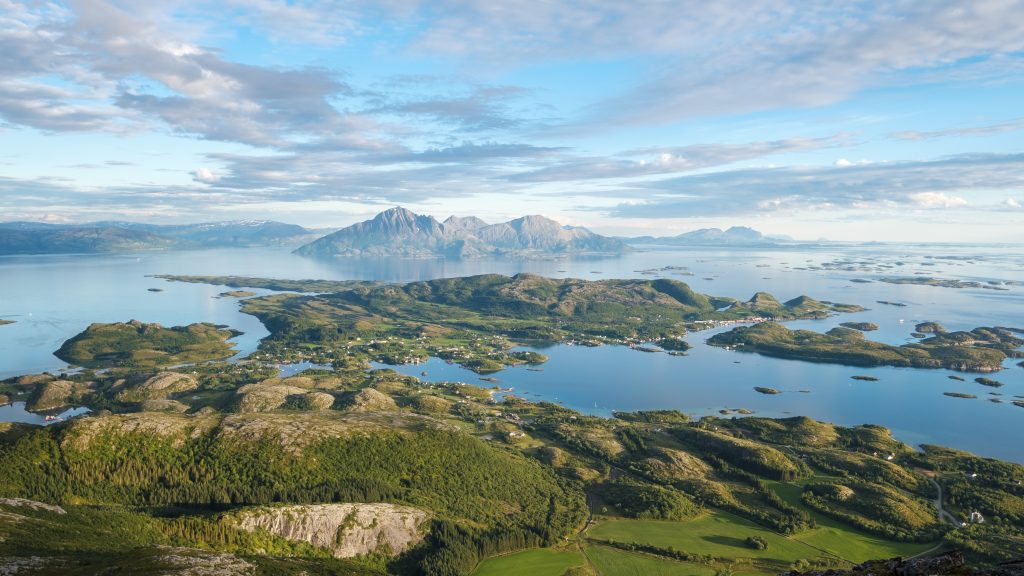 Kristoffer Møllevik / Visit Helgeland
Kristoffer Møllevik / Visit HelgelandLurøyfjellet offers one of the most beautiful scenic hikes on the Helgeland Coast, with views of nearly all the iconic fairytale mountains and the amazing islands in Lurøy.
Key info
Difficulty: Moderate. For the most part easy terrain to walk, with some demanding parts.
Distance one way: About 4,2 kilometers
Elevation gain: About 670-meter elevation
Duration one way: 1,5 to 3 hours
Season: Year-round, but depending on the snow depth in the winter. Head torch and ice grips are recommended in the winter.
Trailhead: The trip starts by the parking lot along a gravel road, south of Lurøyfjellet, west of Middagsfjellet.
Find the trailhead on Google Maps
With its nearly 700-meter-high summit, makes Lurøyfjellet a tall mountain in an otherwise flat terrain, and is one of the greatest advantage points along the entire Helgeland Coast. Towards the north, you can see Hestmannen and Rødøyløva. In the west, you can see the islands of Lovund, Træna, and the beautiful Solværislands. In the south, the towering mountains of Tomskjelven, Dønnamannen, The Seven Sisters, Vega, and Søla can be seen. And in the east you can see Hjarttinden on Aldra, standing proudly in front of the other tall summits in Aldersundet. All of this and more, are things you can see from here, and still have time to get back down just in time for lunch or nightfall.
There are two alternative paths up to the summit. Both have the same starting point but the trail splits after a short walk. We recommend taking the path going right, which is a little longer but is less steep, and goes around «Lauklihumpen». The path leading left is nicknamed «The Tarzan Path», it’s shorter but quite a bit steeper.
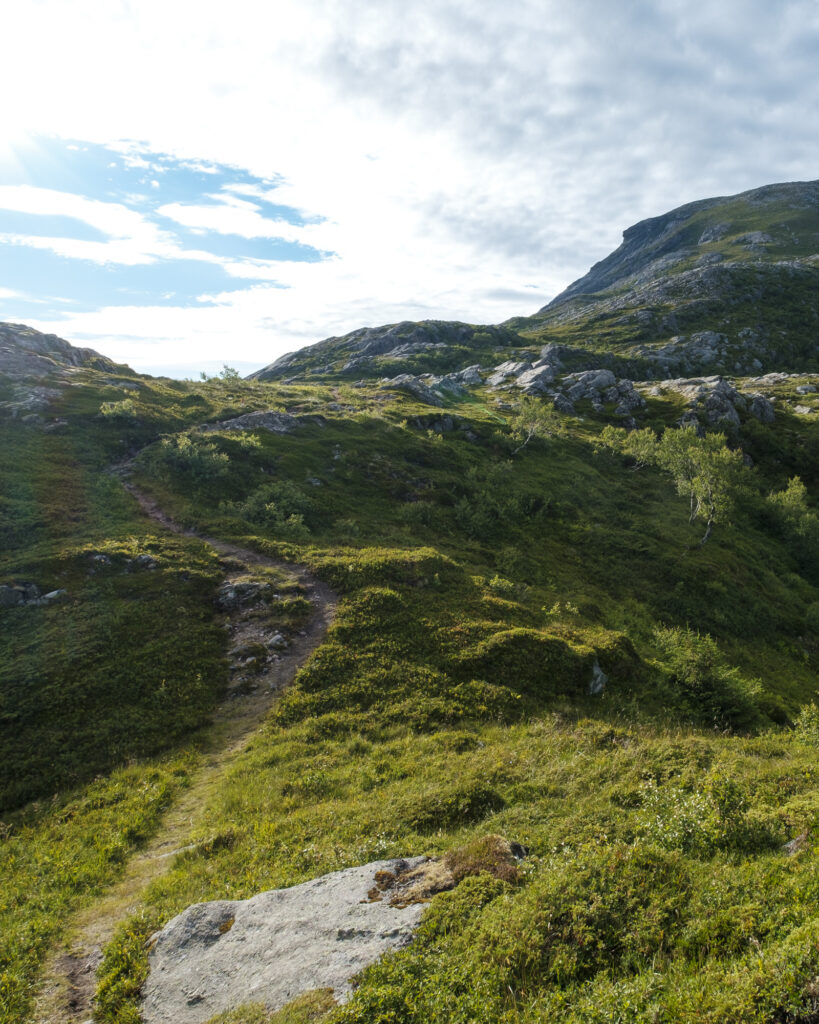 Kristoffer Møllevik / Visit Helgeland
Kristoffer Møllevik / Visit Helgeland
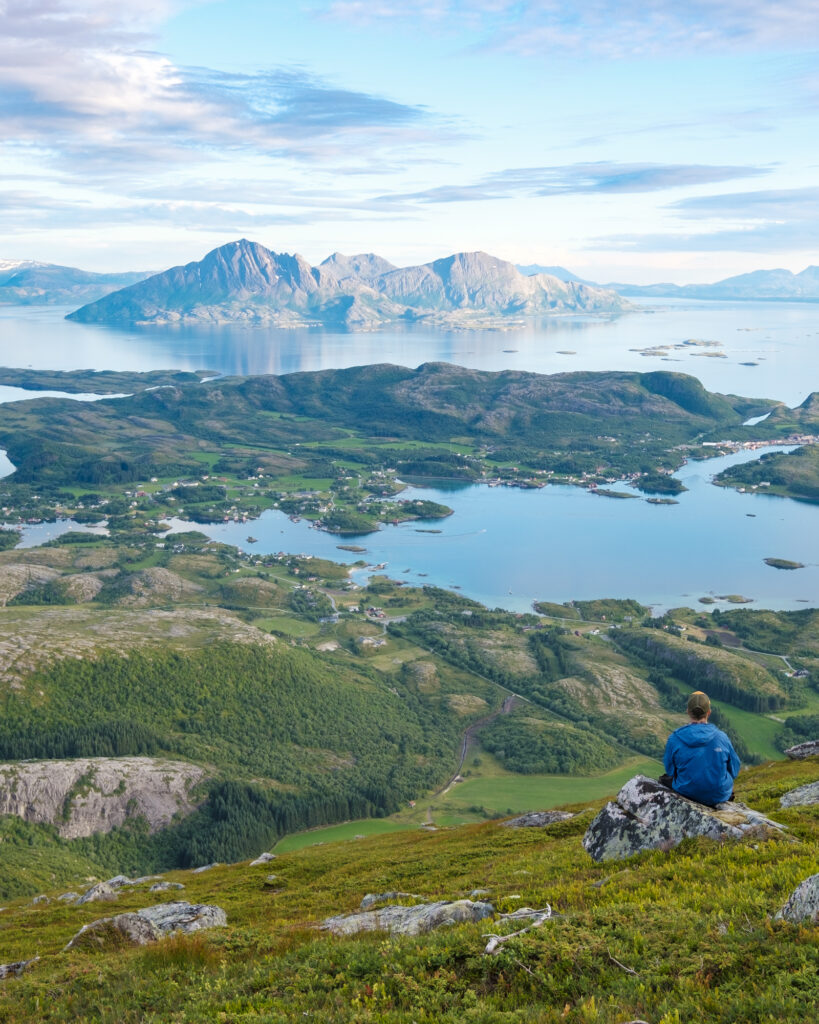 Kristoffer Møllevik / Visit Helgeland
Kristoffer Møllevik / Visit Helgeland
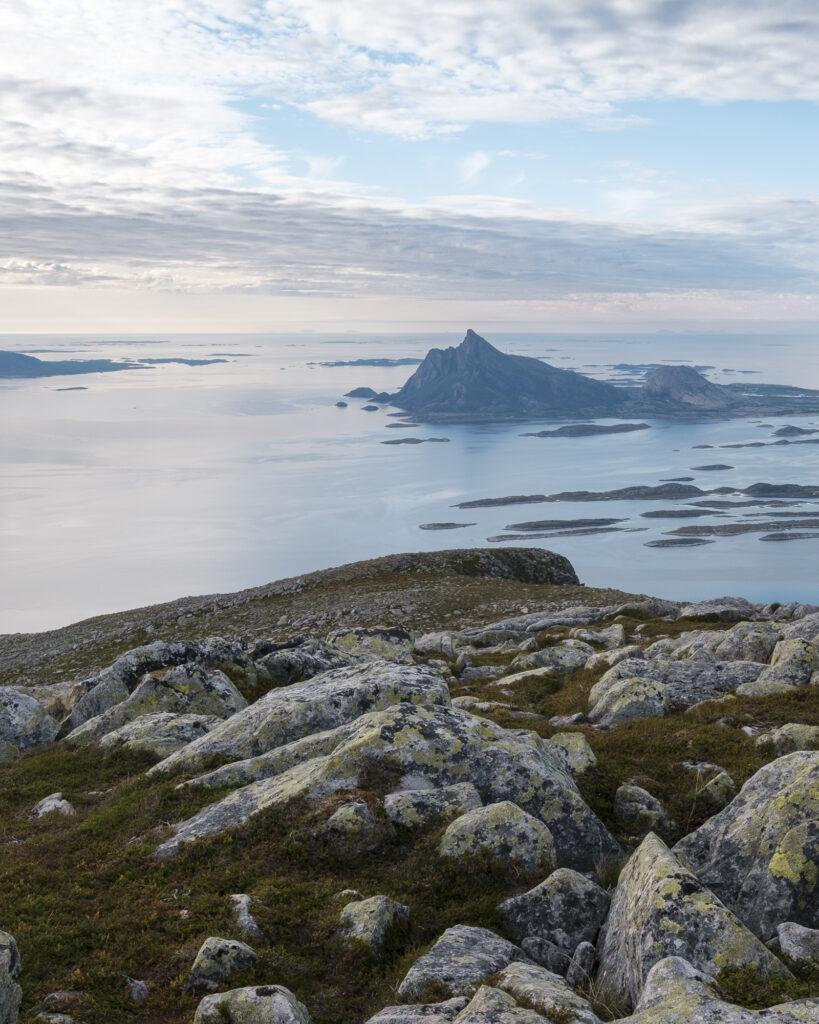 Kristoffer Møllevik / Visit Helgeland
Kristoffer Møllevik / Visit Helgeland
The path is well-marked the entire way up until it starts getting more flat just before the summit. Here the terrain starts to get more challenging, but you can tell there are many worn walking paths and tracks heading towards the top, so if you’re scared of heights, then it could be better to choose a path that leads away from the edge.
Find the hike description on UT.no (in Norwegian)
Find the trailhead on Google Maps
1. Follow the Norwegian Mountain Code and plan according to your ability and equipment
Short hikes on easy terrain don’t require much. If you’re heading out for an hour or two in the lowlands and not gaining much elevation, you won’t need a lot of gear or be in top shape. If it gets cold or you get tired, you’re usually not far from your car.
But if you’re heading into more challenging terrain—steeper, rougher, and above the treeline where the weather is more unpredictable—you’ll need to be better prepared. You should plan the trip based on weather and conditions, be fit enough to complete it, and be ready for uneven ground, boulder fields, slippery roots, and stream crossings. That means carrying a heavier pack with extra clothes and gear, and wearing sturdy hiking boots that support your ankles.
If you’re unsure about taking on a demanding mountain hike, start with an easy or moderate one and see how it feels.
Learn more about the Norwegian Mountain Code at rodekors.no
See what you should bring on your hike on VisitNorway.com
2. Stick to marked trails
A shortcut through unfamiliar terrain can easily turn into a long and difficult detour. What looks like a trail might just be a sheep path that leads you somewhere completely unexpected. If you want the hike to be as easy or challenging—and as long or short—as planned, it’s best to follow marked trails.
If you’re heading off-trail, it’s smart to follow a GPS track. You can download a GPX file from a hike description and use it on a GPS device, a smartphone app, or a GPS watch.
UT.no and the UT app offer hike descriptions with GPS tracks. If your hike doesn’t have one, you can upload a track to ut.no/mine-turer and access it in the app. It’s free, but you’ll need to create an account.
Always carry a map and compass as backup.
UT app for Android / UT app for iPhone
3. Talk to locals or join a guided hike
Locals often have useful tips about your planned hike. They can tell you where to park, whether there’s phone coverage, if the trail is wet, if rivers are high, or suggest a better alternative. Talk to the people where you’re staying, at the local tourist office, or other hikers on the trail—you might get some truly valuable advice.
The best option is to hike with a guide. You can join a group tour or book a private guide. These are experienced locals who know the area well. They’ll help tailor the hike to your needs and share insights that add to the experience.
4. Look out for cultural landmarks
Even high up in the mountains, you’ll find traces of past human activity—some hundreds or even thousands of years old. These can include ancient trail markers, signal cairns, hunting fences, huts, and shepherd shelters. If you spot something interesting, check the KulturPunkt app to see what it is—or use the app to find a cultural site as your hiking goal.
KulturPunkt app for Android / KulturPunkt app for iPhone
KulturPunkt.org
5. Remember your responsibilities under the Right to Roam
Norway’s Right to Roam means you can hike, bike, pick berries, camp, fish, and ski almost anywhere in nature. But it also comes with responsibilities—what we call the “duties of the Right to Roam.” Leave no trace, respect wildlife, and know the rules for hunting, fishing, cycling, and access in protected areas like national parks and nature reserves.
Read more about the Right to Roam and your responsibilities at VisitNorway.com
Thank you for respecting the local communities, and for helping us preserve the natural beauty of Helgeland!
Please:
- Strive to leave no trace of your visit. Bring back all your rubbish, including used toilet paper, and discard it in the nearest rubbish bin.
- Plan your toilet visits and use the opportunity when you pass a toilet. In the wilderness, make sure you are not a nuisance to others.
- Respect the local wildlife. Keep a good distance from wildlife, livestock and birds. Keep your dog leashed.
- Respect private property. Keep a respectful distance from houses and cabins.
- Show good boating sense. Keep a good distance from shore and drive at a low speed, especially when you are close to anyone or anything on the water, including birds or animals. Avoid loud and disturbing engine noise. Be aware that some islands and nature reserves are important nesting sites, and that going ashore is prohibited during the nesting season.
- Follow the Norwegian Mountain Code (Fjellvettreglene). Plan your excursion according to the weather forecast, your skills and experience.
- Join a guided excursion or consider hiring an experienced guide, especially when you don’t have sufficient experience or knowledge to guarantee a safe trip.
